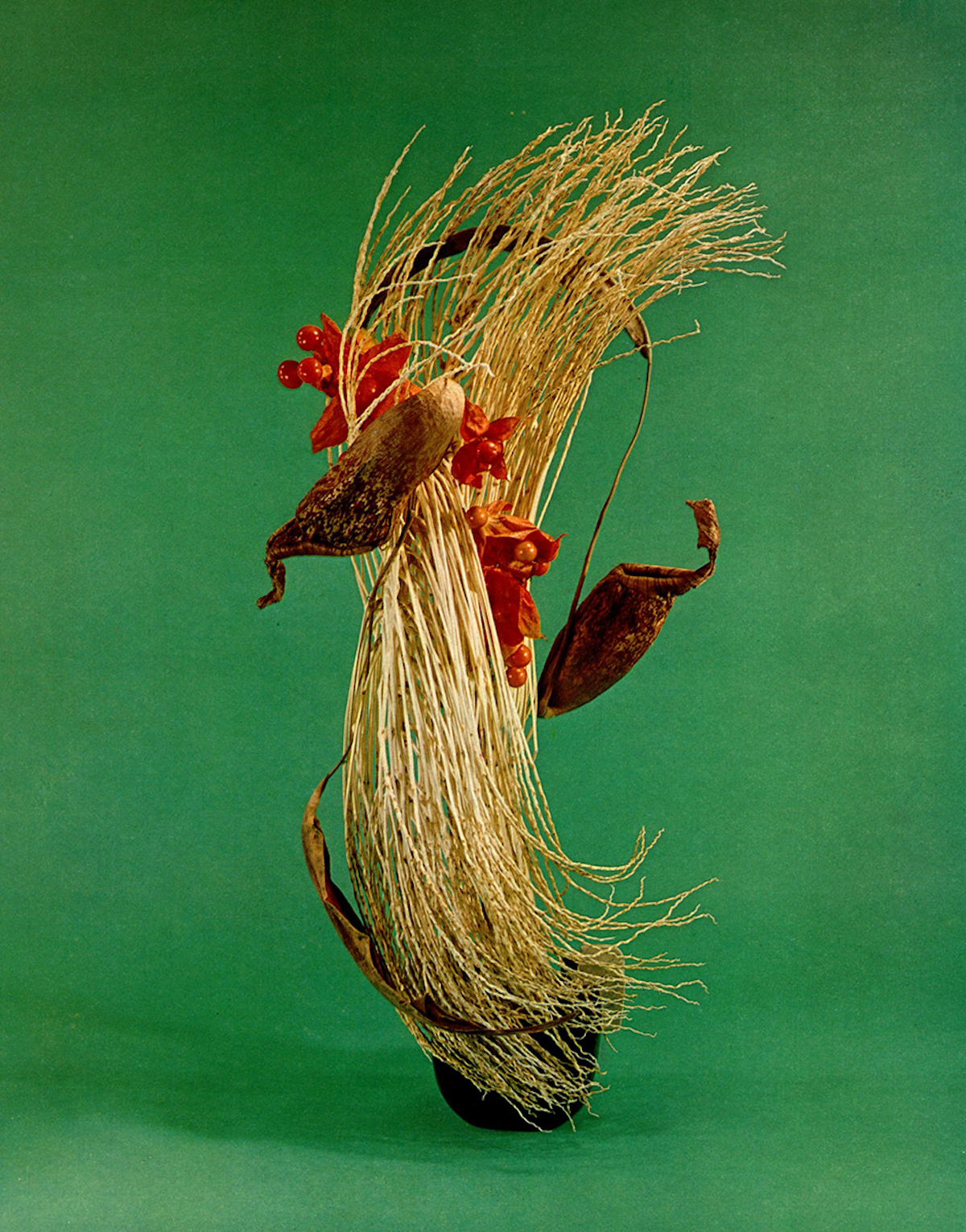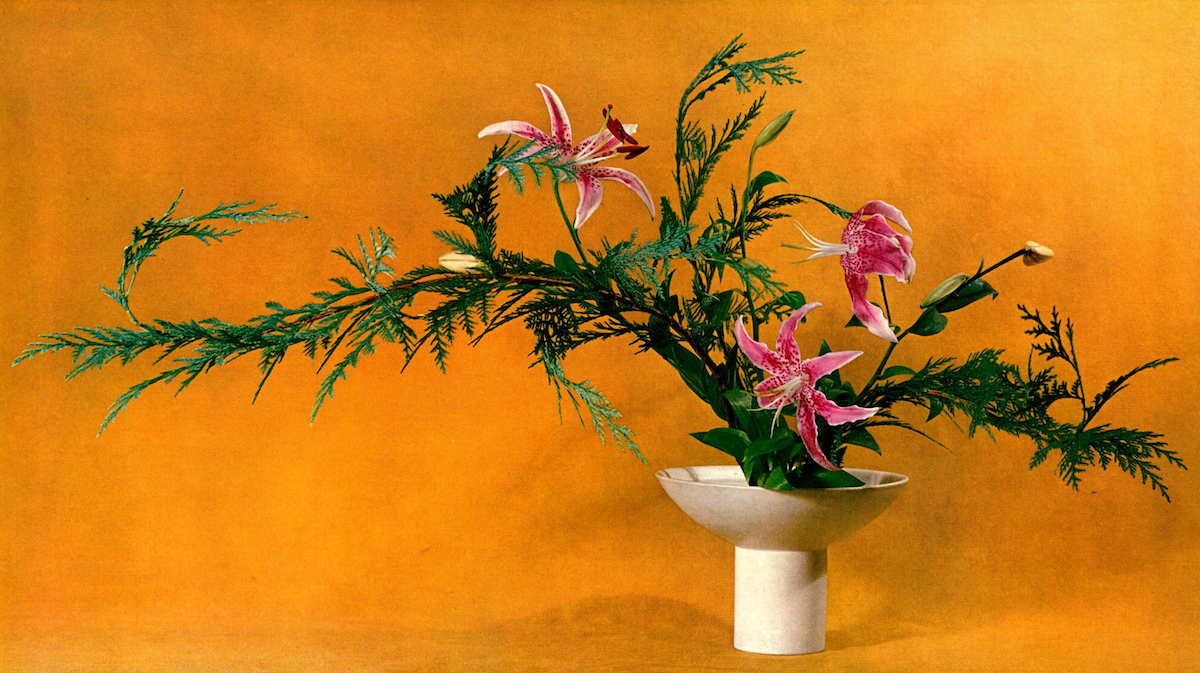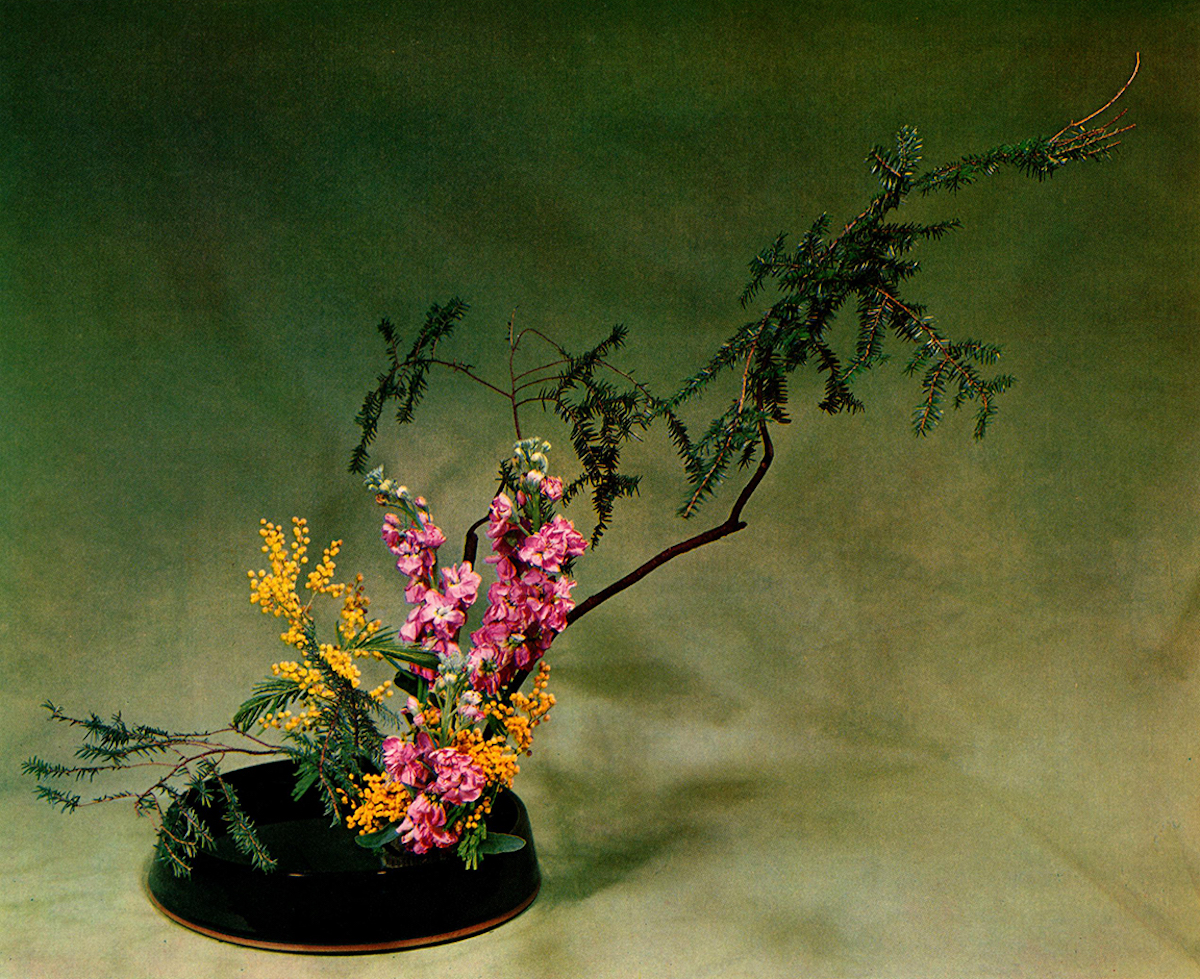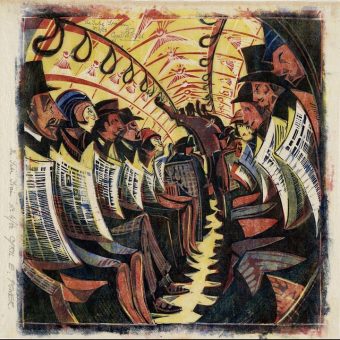
The Art of Arranging Flowers (1965) by Shozo Sato is a comprehensive guide to the Japanese art of ikebana. The practice, which roughly translates to “making flowers come alive”, “the way of flowers” or the less poetic “flowers kept alive” uses flora to create specific human emotions in much the same way a painting or sculpture stirs feelings when you look at it. It’s about getting the balance right and being in tune with the process and the present.
Taught by nature and art, we achieve a sort of harmony, belonging and connection. The aim is akin to that touched on by British writer Iris Murdoch in The Sovereignty of Good (1970):
“The self, the place where we live, is a place of illusion. Goodness is connected with the attempt to see the unself… to pierce the veil of selfish consciousness and join the world as it really is.”

So how do we do get started on purposeful flower arranging and stop sticking sticking flowers in the vase or pint glass? The Bouq blog has a glossary of ikebana terms to know:
The Principles of Ikebana
Minimalism – “Less is more” is a common theme in ikebana. The goal is to evoke strong emotions with few elements. Adding more doesn’t necessarily make an arrangement better.
Asymmetry – Asymmetry is an important component in ikebana. Nature is never perfectly symmetrical. Arrangements that tactically use asymmetry can create interest with the clever use of negative space.
Harmony – Yin-yang principles in design do not necessarily mean symmetry but rather the balance between the different flowers and elements in a composition.
Wabi-sabi – Wabi-sabi refers to emotional responses to art or nature. Wabi is associated with melancholy, nostalgia, desolation, and loneliness. Wabi can invoke feelings of compassion and sadness. Sabi is associated with humility, ruggedness, durability, timelessness, and restraint.
Ephemeral – Transitory nature of reality. Ikebana arrangements by their very nature are not meant to be permanent but last for a certain period of time. This component is powerful in evoking strong feelings.
Spatial dimensions – The lines of the composition capture and guide the attention of the viewer. Positive and negative space can be carefully manipulated to create aesthetically pleasing elements.
Color – Colors are carefully selected in ikebana to create a unified arrangement. Color influences perception in ikebana as it does in any visual art form. Floral displays can emphasize a single color or use contrasting colors for an element of drama.
Three Primary Stems of Ikebana
Subject stem or Shin – the tallest stem
Secondary stem or Soe – the second tallest
Object or Tai or Hikae – the shortest in three stem arrangements


About the author
Shōzō Satō (佐藤 昌三, Satō Shōzō, born Kobe, JapanMay 18, 1933) is an artist, author, calligrapher, playwright, and a professor emeritus of the College of Art and Design at the University of Illinois at Urbana–Champaign. He is the founder and former director of Japan House, and a former artist-in-residence at the Krannert Center for the Performing Arts.
He is an internationally renowned master of Japanese traditional arts, such as Ikebana, Japanese Calligraphy, Sumi-e, Japanese Aesthetics, Japanese Traditional Dance, and Japanese Tea Ceremony. He is also a visionary theater director, most known for adapting Western classics into a traditional Japanese Kabuki style
Images are via Sight Unseen.
Explore our range of flowers in art in the shop.














Would you like to support Flashbak?
Please consider making a donation to our site. We don't want to rely on ads to bring you the best of visual culture. You can also support us by signing up to our Mailing List. And you can also follow us on Facebook, Instagram and Twitter. For great art and culture delivered to your door, visit our shop.









